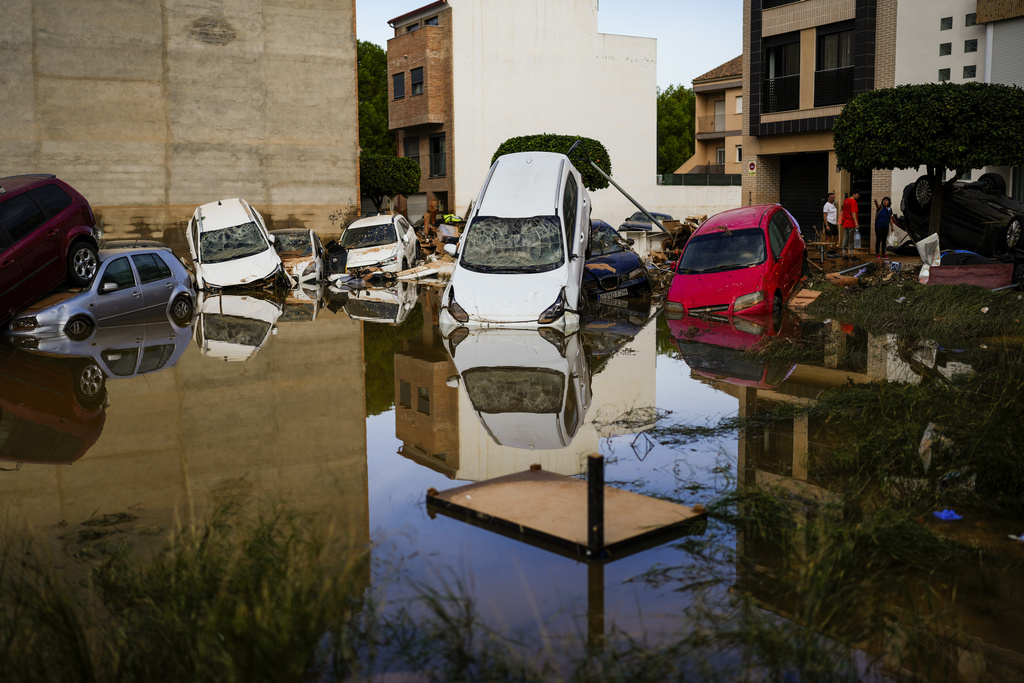Climate Change Raises Spain’s Deadly Floods, Doubling Rainfall \ Newslooks \ Washington DC \ Mary Sidiqi \ Evening Edition \ Climate change has intensified Spain’s recent deadly rainfall by 12% and doubled the likelihood of a storm of this magnitude, reports World Weather Attribution. The catastrophic floods in Valencia, which have claimed over 150 lives, reflect how warming impacts extreme weather. Scientists note that current emissions may push global warming up to 2.6°C within this century, heightening climate risks worldwide.

Climate Change Drives Heavier, Deadly Rainfall in Spain: Key Takeaways
- Increased Rainfall: Human-caused climate change made Spain’s storm 12% heavier and doubled its likelihood, according to scientists.
- Fatal Flooding: Flash floods have claimed at least 158 lives in Spain, with the Valencia region hit hardest.
- Atmospheric Warming Effects: A warmer atmosphere holds more moisture, leading to heavier downpours, as seen in Spain.
- Rapid Analysis Findings: The study by World Weather Attribution linked climate change to increased storm intensity but did not use models for full attribution.
- Global Warming Trajectory: With global warming on track for 2.6°C within this century, scientists warn that more severe weather is likely.
Deep Look
The WWA’s initial analysis, published Thursday, identifies climate change as a primary driver of the extreme downpour, largely due to the fact that warmer atmospheric conditions hold more moisture, which results in heavier rainfall. This rapid analysis falls short of a full, detailed attribution study as it does not utilize climate models to simulate this event in a world without human-caused warming. Instead, the findings are based on historical observations of rainfall data in southern Spain, which indicate a growing trend of intense rain bursts that correlate with increased greenhouse gas emissions from fossil fuels.
“We haven’t conducted a full attribution study yet, given the recent timing of the floods,” explained Clair Barnes, a WWA expert and statistician specializing in climate and extreme weather at Imperial College London. “But we’ve been able to estimate, from recorded rainfall data, that similar storms are about 12% more intense and approximately twice as likely as they would have been in a cooler, pre-industrial climate.” Barnes notes that these findings assume a pre-industrial world about 1.3 degrees Celsius cooler than today, underscoring the substantial impact that warming has already had on weather patterns.
The science behind these estimates reflects an alarming trend: as the world warms, extreme weather events are expected to become more severe and frequent. Since the late 19th century, the Earth’s average temperature has risen by roughly 1.3 degrees Celsius (2.3 degrees Fahrenheit), up from previous estimates due to record-breaking temperatures recorded in recent years, according to the United Nations Environment Programme’s latest Emissions Gap Report. This trend has already intensified precipitation events, particularly in regions like Spain where atmospheric moisture levels have been climbing.
Global temperatures are projected to increase by as much as 3.1 degrees Celsius (5.6 degrees Fahrenheit) above pre-industrial levels by the end of the century if current trends continue. However, if countries meet their commitments under the U.N.’s emissions targets, warming could be contained to 2.6 degrees Celsius (4.7 degrees Fahrenheit), though this level would still lead to profound climate impacts. This rapid pace of warming amplifies the likelihood of storms, floods, and heatwaves becoming more common and severe in the coming decades.
Climate researcher Ben Clarke, with the Centre for Environmental Policy at Imperial College London, noted the tragic irony of back-to-back extreme weather events around the world, pointing out that Typhoon Koinu struck Taiwan just as Spain’s flooding disaster was unfolding. “These back-to-back events demonstrate the dangers of climate change even at the current level of 1.3 degrees Celsius of warming,” Clarke said. Such severe events, occurring more frequently due to the warming climate, underscore the need for adaptation and emissions reduction on a global scale.
While the WWA’s findings represent a partial analysis, the group’s attribution studies have repeatedly highlighted the role of human-induced climate change in extreme weather events. In the case of Spain, the observation-based analysis suggests that fossil fuel emissions have directly contributed to the storm’s severity, affecting hundreds of thousands of residents in the region. These findings add urgency to the need for stronger international action to mitigate climate change, particularly by curbing greenhouse gas emissions and investing in sustainable infrastructure designed to withstand more intense storms.
As the climate continues to warm, communities across the globe will need to adapt to increasingly unpredictable weather patterns. Recent projections indicate that the Mediterranean region, including Spain, is particularly susceptible to heatwaves and severe rainfall, both of which threaten agricultural productivity, water resources, and public health. In addition to preparedness measures, scientists stress the importance of continuing emissions reduction efforts to limit further warming and potentially avert the worst effects of climate change.
Climate Change Raises Climate Change Raises Climate Change Raises







